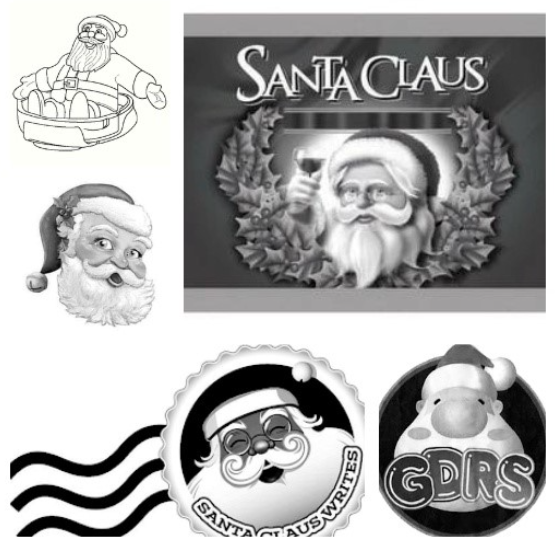It’s December, and everywhere you go, the streets and stores are awash in seasonal décor, and holiday products and Christmas programming are glistening in your eyes once again. In the spirit of the season, we have compiled “five golden [th]ings” to know about the intersection of Christmas and protecting seasonal brands.
1. Yes Virgina, You Really Can Trademark “Christmas”—Sometimes. As of December 20, 2024, there were 1,174 live trademark applications/registrations containing or consisting of the word “Christmas.” For example, MRS. CHRISTMAS (Reg. No. 6434862) is registered for Christmas decorations; Christmas ornaments and decorations of nonelectrical type, and WHITE CHRISTMAS for use in connection with ice cream recently has been published for opposition. Interestingly, the United States Patent and Trademark Office (“USPTO”) did not require either of the foregoing marks to disclaim the word CHRISTMAS apart from the mark as shown. But more often than not, a disclaimer has been required. For example, CHRISTMAS PLUS (Reg. No. 6,215,204) for use in connection with entertainment services in the nature of providing entertainment programs and content, namely, movies, was required to disclaim “Christmas.” Similarly, THE JOLLY CHRISTMAS SHOP (Reg. No. 6,276,960) for use in connection with catalog ordering service featuring holiday home decor also was required to disclaim “Christmas Shop” to achieve registration. Something to consider, some applicants choose to proactively disclaim “Christmas” to speed along the application process, such as CHRISTMAS CAMP (Reg. No. 5,976,769) for use with Christmas tree ornaments, which achieved registration in only 7 months.
2. It’s The Most Seasonal Time of the Year. Descriptive trademarks require proof of secondary meaning to achieve registration. Secondary meaning is shown via evidence of (among other things) length and exclusivity of use. Similarly, trademarks require proof of continuous use in order to avoid a finding of abandonment. The fact that Christmas-related trademarks are seasonal by nature and thus are only in use leading up to and during the holiday season each year can make showing a significant “length” of use and “continuous use” difficult to prove. Luckily, the USPTO and various courts have noted the special circumstances of seasonally-available brands, including holiday brands, and have taken that seasonality into consideration in both secondary meaning and abandonment contexts. Trademark Manual of Examining Procedure § 901.02, citing H.R. Rep. No. 1028, 100th Cong. 2d Sess. 15 (1988) (“‘[T]he ordinary course of trade’ varies from industry to industry . . . for example, it might be in the ordinary course of trade for an industry that sells expensive or seasonal products to make infrequent sales . . .”). But holiday brand owners should be mindful to make the most of their time on the market and document their use evidence closely.

3. Santa Claus’ Logo is Coming to Town. Though legends of Santa Claus date back to St. Nicholaus in the 17th Century, the rotund, white-haired, and rosy-cheeked image of Santa Claus that probably comes to mind for most of us was itself first used as a trademark for the Coca-Cola Company (Reg. No. 3,121,372). This does not mean others cannot use a Santa image or name as part of their holiday brand: There currently are 161 live applications or registrations with a description containing SANTA CLAUS and 166 with the words “SANTA CLAUS,” “SANTA CLAWS,” or “SANTA PAWS.” But it does mean that brand owners need to be sure their “SANTA” marks are unique and make that jolly old soul their own. See Reg. Nos. Reg No. 5673045, 6205836, 5991346, 6253850, and 3286698.
4. All I Want for Christmas is Protectable Trade Dress. In a mid-2024 Christmas case, a business using CHRISTMASHOUSE sued another business using CHRISTMAS regarding the look and feel of its competing, immersive Christmas-themed walk-through attraction. The owner of CHRISTMASHOUSE requested an injunction, but because it failed to plead trade dress infringement, establish a protectable trademark, or demonstrate irreparable harm, its request was denied. Christmas H. USA Inc. v. ChristmasLand Experience LLC, No. 23-CV-8412 (LDH) (SIL), 2024 WL 1494687, at *4 (E.D.N.Y. Apr. 5, 2024). The case was later dismissed. But those seeking to protect non-traditional holiday trade dress should not dismiss their dreams of protectability. Instead, being mindful to avoid claiming protection over a general style or concept, they must adequately define their claimed trade dress, demonstrate the distinctiveness of the overall visual impression of their claimed trade dress, and prove that their claimed trade dress is nonfunctional. Functionality inquiries first ask whether the significant non-trademark function is essential to the use or purpose of the trade dress or affects its cost or quality. If not, the second question is whether protection of the claimed feature as a trademark would impose a significant non-reputation-related competitive disadvantage.
5. It’s Beginning to Look A Lot Like Design Patents and Copyrights. Trademarks and trade dress are perhaps the most common means of protecting the look and appearance of seasonal product offerings, but by no means are they the only means of protection. The appearance of such products also can be protected by design patents or copyrights. Variations of Christmas tree lights, Christmas tree ornaments, and even Christmas trees have all been protected by a design patent at some point. D935,648; D952,200; D803,718; D1044582. In addition, three-dimensional depictions of Christmas characters can earn copyright protection as a sculptural work. In an early 2024 decision in a Schedule A copyright case, Naughtys LLC, maker of adult-themed Santa and Mrs. Claus ornaments successfully obtained a TRO and then preliminary injunction against various third parties selling similar ornaments that allegedly infringed the copyrights of Naughtys LLC. Naughtys LLC v. Does et al, No. 4:2024cv00142 (E.D. Tex. 2024). On December 12, 2024, the Eastern District of Texas entered default judgment against all defendants remaining in the case.
There you have it, the holiday season may be the most wonderful time of the year, but it is also, perhaps, the most brand-focused time of the year. All we at Irwin IP want for Christmas is to help you with your intellectual property protection needs (and perhaps a new convertible too, light blue).
